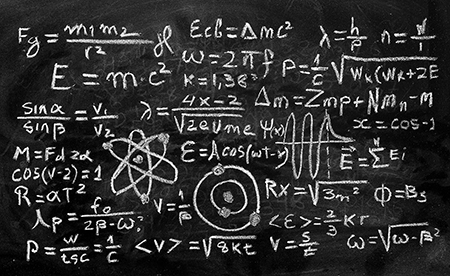Quantum computing is the next frontier in the information revolution. Its potential appears both limitless and frightening: it is bringing science fiction into reality.
To make sense of its implications for technology and society at large, it is worth analyzing quantum computing in the context of Thomas Kuhn and his most famous work, “The structure of scientific revolutions” (1962 and 1969). Kuhn, a philosopher, analyzes the history of science and the various implications present in all areas of research. According to Kuhn’s view, scientific development begins from the paradigm: a set of universally recognized principles, procedures and conceptions as understood by the scientific community of a given era. The scientific community shares the same basic ethical, methodical and interpretative approaches to solving problems and they promulgate this overall content through education. A phase of normality, or as Kuhn calls it normal science, ensues.

This is a phase where scientists appear committed to consolidating, confirming and developing existing paradigms, absorbing any inevitable contradictions that gradually arise. Until, as Kuhn believes, normal science enters a crisis due to a series of anomalies that are typically unsuspected events, which scientists find increasingly difficult and eventually impossible to adjust within the prevailing paradigm. Thus, Galileo found it necessary to break away from Aristotle and Ptolemaic geocentric cosmology. And thus did Albert Einstein find it essential to go beyond Newtonian physics, introducing new paradigms with Relativity and Special Relativity in 1905. Indeed, from 1900 to 1930, more or less, starting above all from physics, science underwent a series of upheavals or revolutions, as Kuhn would describe them, resulting from theoretical formulations, always confirmed, which falsified the mechanistic or Cartesian-Newtonian paradigm: this change is still in progress and proceeds very slowly. Scientists, faced with problems they cannot solve with the application of well-known and specific paradigm, question its principles and develop new ones. And they are then forced to rethink everything, reframing their understanding of the world.
Quantum computing relies on quantum mechanics. And just as that theory of physics (which established a new paradigm by providing the tools to analyze how the world works at the atomic and subatomic level) it solve problems that traditional computers cannot solve. Quantum computers use “quantum bits” or qubits. Unlike traditional bits, qubits can be set to zero, one, or a combination of both. This allows them to process information much faster than traditional computers. Quantum theory was developed in the 1920s, while traditional computing gave us the first computers by the late 40’s and early 50’s.
The first quantum computer (two-bit) dates back to 1998 – end it was an unlikely quantum computer, as its bases were NMR spectrometers. Since then, quantum computers have been developed with an ever-increasing number of bits and ever-lower error rates. But research on quantum computing is just beginning, and more paradigms, in the Kuhnian sense, are likely to be established. Consider the traditional computer. A handheld smartphone, barely a few millimeters, has more computing power than mainframes that took up hallways a mere few decades ago. And a team of Australian engineers recently announced in Nature that they had essentially found a method to build smaller quantum computers. It is no coincidence that a company called IonQ has announced the construction of a 6000 square meter quantum computer factory: the first of its kind.

How will the quantum revolution affect technology? That’s a question best answered in quantum terms. That is, probabilities and potential is limitless. Much is said about quantum computings potential in preventing cyberattacks and security. But the scientists who led the quantum revolution in the 1920s — Niels Bohr, Werner Heisenberg, Max Born or Wolfgang Pauli, to name a few, would be far more excited by what quantum computings constructive potential. Even the imagination of a Jules Verne or George Lucas would struggle to imagine how an infinitely more powerful information processing tool can advance humans’ understanding of the world. But, one area where scientists are planning to muse quantum computing is medicine; because far more detailed models of molecular processes are possible, it allows biologists to discover new drugs and treat diseases. They may finally find effective treatments for cancer. Similarly, quantum computing could have a similar impact on materials science; for instance, helping develop new materials to make batteries more powerful, longer lasting and much lighter.
Quantum computing represents a real revolution with implications far beyond the traditional scientific sphere. This technology is still experimental, But once perfected, it will be able to advance the solution of problems that have proven intractable until now. In other words, quantum computing, a new paradigm in itself, has the potential to generate multiple scientific revolutions.


